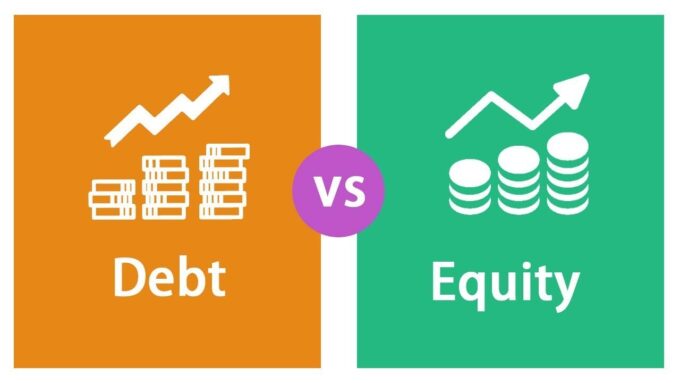Private equity firms are a vital component of the financial industry, playing a significant role in capital allocation, business development, and wealth creation. But how do they make their money? In this blog, we’ll explore the various strategies and mechanisms private equity firms employ to generate profits, shedding light on their often complex and sometimes controversial methods.
Introduction to Private Equity

Private equity firms, often abbreviated as PE firms, are instrumental in shaping the corporate landscape. They have gained prominence as key players in the world of finance due to their ability to transform underperforming or undervalued companies into profitable enterprises. PE firms operate by raising capital from various sources, such as pension funds, endowments, and high-net-worth individuals, and then strategically investing this capital in private companies.
These firms are different from traditional investment vehicles like mutual funds or hedge funds because they acquire ownership stakes in privately held companies, rather than publicly-traded ones. This private ownership structure enables them to exert significant control and influence over the operations and strategic direction of their portfolio companies.
Leveraging Debt Financing

Leverage is a fundamental element of private equity investing, and it deserves a closer look. When a private equity firm acquires a company, it seeks to maximize returns by using a combination of equity (the investors’ money) and debt (borrowed money). This leverage can significantly amplify the returns on the equity invested.
However, the use of leverage also magnifies risks. If the target company’s performance falters, the burden of servicing the debt becomes more challenging, potentially leading to financial distress or bankruptcy. Private equity professionals must carefully manage this balance between leverage and potential rewards, ensuring they can meet debt obligations even in adverse economic conditions.
The art of managing leverage is one of the key skills that sets successful private equity firms apart. They conduct thorough due diligence before acquiring a company to assess its ability to generate cash flows and support the debt load.
Operational Improvements

Private equity firms are not passive investors who simply provide capital and hope for the best. Instead, they roll up their sleeves and actively engage in the management of their portfolio companies. This hands-on approach involves implementing a range of operational improvements to enhance the target company’s performance.
Operational improvements can take various forms, depending on the specific needs and challenges of the company. Private equity professionals might revamp supply chain processes, invest in research and development, or restructure the management team to increase efficiency and drive growth. These efforts are aimed at boosting the company’s profitability and, by extension, its value.
It’s worth noting that private equity firms often bring in experienced executives from their network to lead these initiatives. These individuals have a proven track record of turning around businesses, and their expertise can be a valuable asset in the pursuit of profitability.
Using Business Intelligence Software
In the age of data-driven decision-making, private equity BI software helps firms use technology to gain a competitive edge. This software allows them to collect and analyze vast amounts of data from their portfolio companies in real time. This data-driven approach empowers them to make informed decisions, identify growth opportunities, mitigate risks, and optimize operations.
Through BI software, private equity professionals can monitor key performance indicators (KPIs) such as revenue growth, profit margins, customer satisfaction, and market share. They can also track financial metrics like cash flow, debt service coverage, and return on investment. This constant monitoring provides a clear picture of how the portfolio companies are performing and where improvements are needed.
Exit Strategies

Private equity firms have a keen eye on the exit from the moment they acquire a company. The success of their investment often hinges on the timing and execution of the exit strategy. These strategies can vary depending on market conditions, the company’s performance, and the broader economic landscape.
One common exit strategy is selling the portfolio company to another business, often a strategic buyer looking to expand its operations or diversify its product/service offering. This approach can result in lucrative sales if the target company is in a desirable industry or has a unique market position.
Another exit option is taking the company public through an initial public offering (IPO). This route allows the private equity firm to sell its shares in the public market, potentially realizing a substantial return on investment. However, IPOs involve significant regulatory and operational complexities and require careful planning and execution.
Management Fees and Performance Fees
While the core of private equity’s profitability lies in capital appreciation and successful exits, private equity firms also generate revenue through management fees and performance fees. Management fees are a regular source of income for private equity firms. They typically charge their investors an annual fee based on a percentage of the total assets under management (AUM). This fee covers the firm’s operating expenses, such as salaries, office space, technology infrastructure, and legal and administrative costs. Management fees provide a stable revenue stream, even in years when the firm may not realize significant profits from its investments.
Performance fees, often referred to as carried interest, are where private equity professionals can earn substantial rewards. These fees are tied to the success of the investments. Typically, private equity firms receive a share of the profits generated from the investments once a certain return threshold, known as the “hurdle rate,” has been exceeded. The structure and size of the performance fee can vary, but it’s typically a significant motivator for private equity professionals to deliver strong returns to their investors.
Controversies and Concerns
The private equity industry is not without its fair share of controversies and concerns. Critics argue that the pursuit of profit by private equity firms can sometimes come at the expense of other stakeholders, including employees and communities tied to the target companies.
One common criticism is the practice of layoffs and cost-cutting measures, which are often implemented to improve a company’s profitability. While these actions can make a company more financially sound, they can also result in job losses and negative social impacts.
Additionally, private equity firms sometimes employ aggressive financial strategies, such as asset-stripping or loading a portfolio company with excessive debt, to maximize short-term returns. These strategies can lead to long-term financial instability and have broader economic implications.









